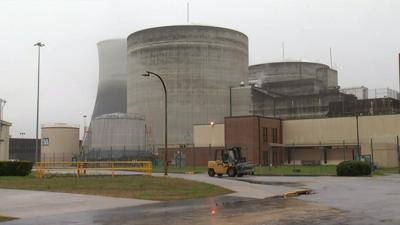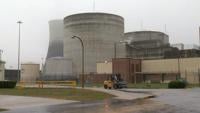Wednesday was the 50th anniversary of Earth Day.
Over the past 50 years, people and industries have focused on conservation and improving the environment.
Locally, TVA is helping the Earth by providing cleaner electricity through its nuclear power generation.
Back in March before the coronavirus pandemic, Channel 3 was able to go inside the Sequoyah Nuclear Plant in Soddy-Daisy to find out why nuclear energy is better for the environment and how the power is generated.
"We produce 2400 Megawatts of carbon-free electricity. We're not polluting the environment, and every employee out here is a dedicated nuclear professional that at their heart is an environmentalist," Matthew Rasmussen, Site VP of the Sequoyah Nuclear Power Plant, explained.
At Sequoyah Nuclear Plant, two reactors hold uranium fuel bundles, where atoms are split in the process of fission, releasing heat.
Water inside the reactor heats up and goes into a steam generator. There, another closed loop of water boils into steam.
"It then runs through our turbine building. Goes through our turbines. Spins our turbines at 1800 RPM, which we have tied to the electric grid at 60 Hertz, which is what your electric grid, everybody is operating at, and producing that carbon-free electricity every day," Rasmussen said of the process.
Uranium does have to be mined and radiological waste must be stored for nuclear power to work, but the scale is small.
"We're not emitting anything into the atmosphere. We're not burning anything. We're using pellets about the size of our fingers - the tips of our fingers about the size of the eraser on the back of a pencil to produce the same amount of energy that about 1 ton of coal produces," compared Rasmussen.
The majority of Sequoyah's nuclear waste stays on site. The plant has been operational for almost 40 years.
"All of that waste would fit inside a 100-yard area — 100 by 50-yard area. So, think about a football field itself. All of that would fit inside of a football field. So, the amount of waste generated for the amount of power produced is significant," Rasmussen clarified.
TVA pumps water from the Tennessee River into the plant to cool certain components.
The iconic cooling towers are used for this uncontaminated water only before it's released again.
"That's all that is just vapor and mist coming up from the tower as we cool that river water before we send it out to the river," assured Rasmussen.
Another benefit of nuclear plants is that they are running all the time.
"95 percent of a given year, we are online making electricity. That is by far the most efficient power source in the United States," Rasmussen emphasized.
Sequoyah and TVA's two other nuclear power plants are safe because of the plants' design with multiple layers of protection, the well-trained employees, and proper routine maintenance.
40 percent of TVA's power produced is nuclear power.
They have worked to greatly reduce their carbon emissions since their peak in 2005, and now 60 percent of their power generated is carbon-free, including nuclear, hydroelectric dams, solar, and wind.









